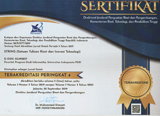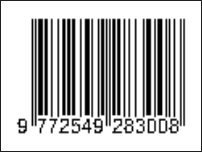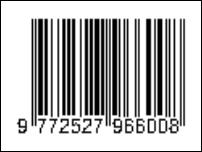Implementasi Algoritma Clustering Partitioning Around Medoid (PAM) dalam Clustering Virus MERS-Cov
(1) Universitas Indraprasta PGRI
(2) Universitas Indraprasta PGRI
(*) Corresponding Author
Abstract
The Middle East Respiratory Coronavirus (MERS-CoV) is a disease caused by a coronavirus. This virus is contagious, but its transmission is not as easy as the common cold, MERS-CoV virus is better susceptible to transmitting through direct contact, for example in people who care about the MERS-CoV virus without the need for virus protection. To determine the characteristics, the MERS-CoV disease virus can be identified by identifying DNA (deoxyribonucleic acid). One technique in understanding the characteristics of life is by grouping. Grouping can be done by grouping DNA into groups that have attributes and functions. The Clustering algorithm used in this study is Partitioning Around Medoid (PAM). This algorithm has the advantage that the results of the grouping process are not by following the order of entering the dataset and overcome sensitivity to noise and outliers. The purpose of this study is to implement the Partitioning Around Medoid (PAM) clustering algorithm in clustering the MERS-CoV virus. This research was conducted through a quantitative descriptive literature study. The implementation of the PAM algorithm on the MERS-CoV DNA sequence obtained 2 clusters with the highest silhouette coefficient value on the number of clusters 2, namely 0.61534. The number of members in Cluster 1 is 84 MERS-CoV DNA sequences and the number of members in Cluster 2 is 16 MERS-CoV DNA sequences.
Keywords
Full Text:
PDFReferences
K. Kamal, K. A. Sugeng, and T. Siswantining, “Implementation algorithm modification maximum standard deviation reduction in graph clustering using matrix complement as input,” AIP Conf. Proc., vol. 2023, 2018.
A. Bustamam, E. D. Ulul, H. F. A. Hura, and T. Siswantining, “Implementation of hierarchical clustering using k-mer sparse matrix to analyze MERS-CoV genetic relationship,” AIP Conf. Proc., vol. 1862, no. July, 2017.
R. V. S. A. Morihito et al., “Identification of Changes of DNA Structures on Cancer Cll Form Using Graph Decomposition,” J. Ilm. Sains, vol. 17 No.2, pp. 153–160, 2017.
T. Taslim and F. Fajrizal, “Penerapan algorithma k-mean untuk clustering data obat pada puskesmas rumbai,” Digit. Zo. J. Teknol. Inf. dan Komun., vol. 7, no. 2, pp. 108–114, 2016.
L. P. Rizby, Marji, and L. Muflikhah, “Clustering Pasien Kanker Berdasarkan Struktur Protein Dalam Tubuh,” J. Pengemb. Teknol. Inf. dan Ilmu Komput. Univ. Brawijaya, vol. 2, no. 10, pp. 3810–3816, 2018.
DOI: http://dx.doi.org/10.30998/string.v5i1.6469
Refbacks
- There are currently no refbacks.
Copyright (c) 2020 Septian Wulandari, Nurfidah Dwitiyanti

This work is licensed under a Creative Commons Attribution 4.0 International License.
STRING (Satuan Tulisan Riset dan Inovasi Teknologi) indexed by:

Ciptaan disebarluaskan di bawah Lisensi Creative Commons Atribusi 4.0 Internasional.
View My Stats


 Sertifikat Akreditasi
Sertifikat Akreditasi
















